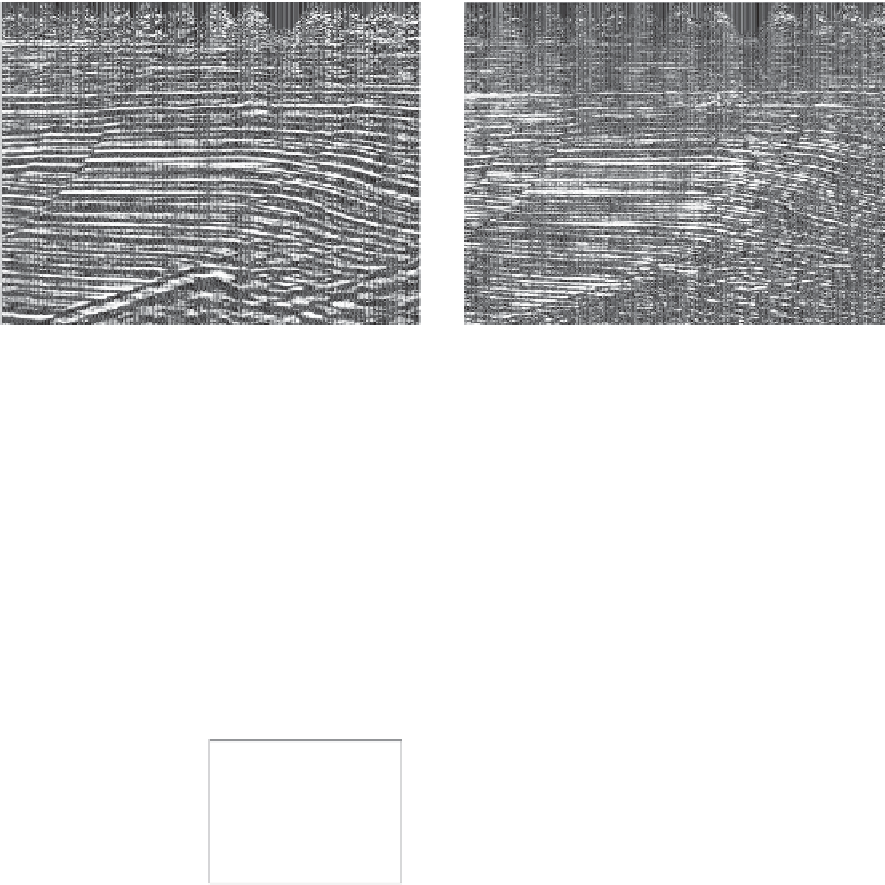Geology Reference
In-Depth Information
a)
b)
Trace number
Trace number
0
1
51
101
151
201
251
301
0
1
51
101
151
201
251
301
0.5
0.5
1.0
1.5
1.0
1.5
2.0
2.0
2.5
2.5
3.0
3.5
3.0
3.5
4.0
4.0
possible to create a zero phase result at a specific target
rather than over the whole section.
If the interpreter does not have access to software
for detailed wavelet shaping, an approximation to
zero phase can often be achieved by a simple phase
rotation. The amount of rotation is determined by
rotating the extracted wavelet until it is approximately
symmetrical with the desired polarity. This rotation is
then applied to the seismic dataset. Software for such
simple phase rotation is widely available.
In the absence of well data to establish phase it
may not be possible to accurately zero phase the
seismic data. Sometimes it is possible to check wavelet
phase from seismic reflectors whose characteristics
are well known, such as the top of a thick soft shale
(such as the Kimmeridge shale in parts of the North
Sea) or the top of a thick hard limestone. The problem
of phase determination without wells is discussed in
Chapter 4
.
Extracted wavelet
100
0
TWT
Convolve with inverse operator
-100
-50
0
50
TWT
0
-10
Zero phase wavelet
-20
-30
-40
-50
0
50
TWT
15
30
45
50
Hz
Figure 3.12
Zero phasing through application of an inverse
3.6.3 Bandwidth improvement
Convolution operators can also be used to broaden
the bandwidth of seismic data. In principle, increasing
the bandwidth gives better vertical resolution and also
an improved result in trace inversion. Historically the
aim was to achieve a flat amplitude spectrum, usually
called a white spectrum by analogy with visible light,
where low frequencies are red and high frequencies
are blue. Effectively the amplitudes of all frequencies
operator.
results and the interpreter needs to determine which
method is best for the dataset at hand. Often the
various wavelet extractions are used to
'
de-phase
'
the seismic data (i.e. apply a
correction)
followed by an evaluation of the results. In situations
where Q is poorly understood or where inverse
Q has not been applied to the seismic, it may only be
'
phase-only
'
30




































































